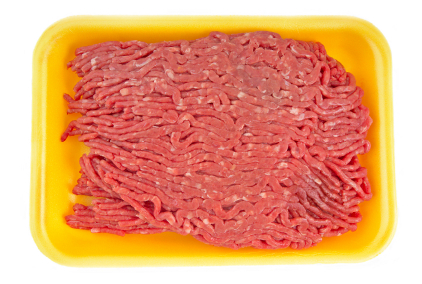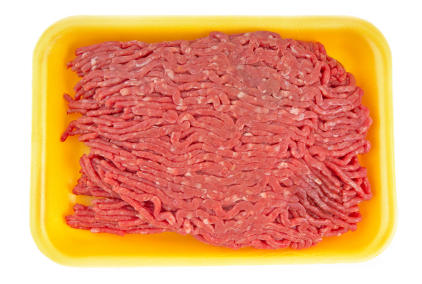In Meat Wagon, we round up the latest outrages from the meat and livestock industries.
———-
 Is antibiotic-resistant-salmonella-tainted beef what’s for dinner? Standard j-school-style journalism takes a lot of lumps these days–and justifiably so. To maintain an illusion of “objectivity,” traditional reporters write like above-the-fray observers merely recording “the facts”–as if choosing which facts to record weren’t itself subjective. (In reality, of course, a reporter is a thinking human being trying to figure out what’s going on and tell a story.)
Is antibiotic-resistant-salmonella-tainted beef what’s for dinner? Standard j-school-style journalism takes a lot of lumps these days–and justifiably so. To maintain an illusion of “objectivity,” traditional reporters write like above-the-fray observers merely recording “the facts”–as if choosing which facts to record weren’t itself subjective. (In reality, of course, a reporter is a thinking human being trying to figure out what’s going on and tell a story.)
Yet sometimes, j-school style articles have a delicious subtlety. And if you know enough about the topic in question to provide context and connect the dots (both frowned upon by j-school types), they can deliver rich information.
I’m thinking of this fantastic Associated Press article by Garance Burke on the ongoing food-poisoning outbreak associated with agribusiness giant Cargill.
As I reported last week, a large-scale California beef-packing plant owned by Cargill churned out, packaged up, and distributed widely some 830,000 pounds of ground beef tainted with antibiotic-resistant salmonella. At least 28 people in three states have been laid low by the pathogen. For salmonella, the CDC reckons that for every confirmed illness, 38 people have actually fallen ill. Thus we can assume that around 1000 people have caught the bug.
Burke’s AP article delivers key additional information. To wit:
• Good thing it’s summer, because the Cargill plant in question supplies the National School Lunch Program. I love the oblique way this fact comes out in Burke’s story. The author writes:
Last year, in the wake of the biggest beef recall in history linked to a Southern California slaughterhouse, inspectors visited the Fresno [Cargill] facility and 17 other plants that sold meat to the National School Lunch Program.
And that’s the last we hear about the school lunch program. It should be noted that among demographic groups, kids rank among the most vulnerable to food-borne illnesses.
• Here’s where Burke did excellent reporting–turns out that at that inspection last year, the USDA caught Cargill up to some dodgy business, and little about it. The reporter dug up a document showing that the USDA inspectors observed workers at the plant “using electric prods to coax skittish cattle through a narrow chute leading into the slaughterhouse.” The reporter continues:
When three cows refused to budge, they were stunned and rendered unconscious “so that they could be pulled through the restrainer to be shackled, hung and bled,” the [USDA} records state.
Dragging knocked-out cattle across a filthy slaughterhouse floor invites contamination of the resulting meatmeat. As Burke puts it, the practice “could increase the risk for E. coli and salmonella contamination because cow hides can pick up bacteria from feces that sometimes collect in or around the chute, experts said.”
The reporter gets a memorable quote from a former USDA inspector: “All kinds of feces and urine get into those chutes because they typically aren’t cleaned out during the day because too many animals need to get in.” Nice! And when that stuff gets caked onto an unfortunate beast’s hide, chances that it will end up in the ground beef increase.
From unpacking Burke’s story, it looks like the USDA somehow rebuked the Cargill plant for the dragging practice. And Cargill responded with a creative excuse: “The plant’s parent company, Cargill Meat Solutions, said the animals balked because there were too many auditors present that day.”
In other words, it was all the inspectors’ fault! Not surprisingly, given the meat industry’s power, the USDA caved. Reports Burke:
The company appealed the alleged violation. The USDA’s Food Safety and Inspection Service later rescinded the citation and instead sent Beef Packers a letter of concern.
Now, this is insane on its face. The company’s excuse, as far-fetched as it is, might explain why the animals balked against being marched to slaughter; but it does not explain the practice of dragging knocked-out cows across a floor seething with bacterial pathogens just as they’re about to be processed into burger meat.
That’s like punching a kid in the face at school, and getting out of trouble by saying, “but he threw a spit wad at me!” The excuse, even if accurate, doesn’t mitigate the viciousness of the response.
And Burke wasn’t done. The reporter wanted to know if the USDA had done a follow-up inspection since witnessing the cow-dragging. The priceless response:
Agency spokeswoman Bryn Burkard said a Freedom of Information Act request would have to be made to learn if the plant had been inspected since.
I hope that request is in.
As great as the story is, it neglects to mention that the salmonella in question is antibiotic-resistant. And once you mention that, you have to get into the meat industry’s egregious, systematic reliance on dosing animals with antibiotics as a matter of course to keep them alive under cramped, filthy conditions.
And then there’s the unfortunate fact that President Obama still hasn’t named a director of the food Safety Inspection Service, the USDA sub-branch responsible for monitoring the safety of U.S. meat production. And that last anyone’s heard, the job’s front-runner is industrial dairy man Dennis Wollff, who has scant experience in food safety.
And Cargill isn’t just any meat-packing company. It’s a vast, globe-spanning agribusiness firm with huge positions in everything from fertilizer production and livestock feed to grain trading and processing. And it strides the U.S. meat industry like a colossus. According to researchers Mary Hendrickson and William Heffernan (PDF), it’s the nation’s third-largest beef packer, third-largest cow feeder, fourth-largest pork packer, and third-largest turkey producer.
But even without this critical context, the AP’s Burke has done great reporting and written an important story.




